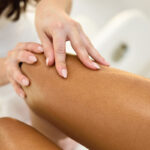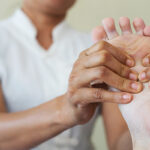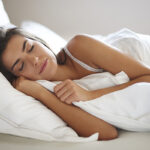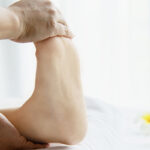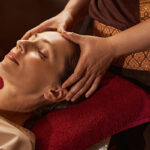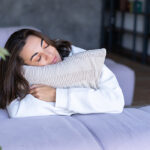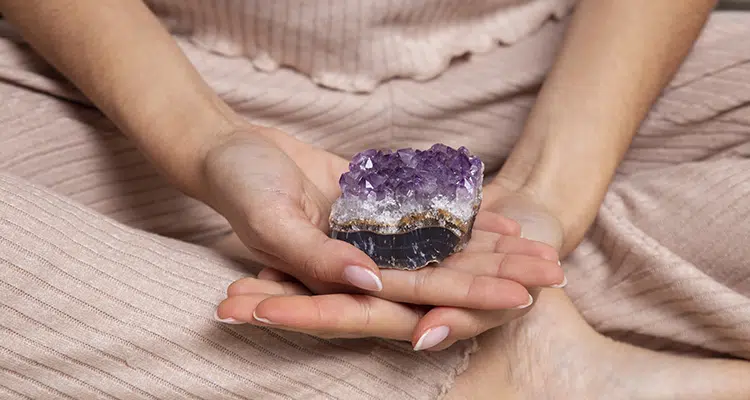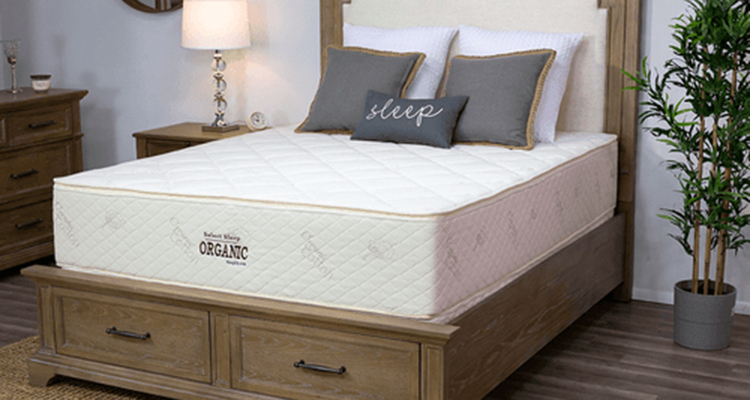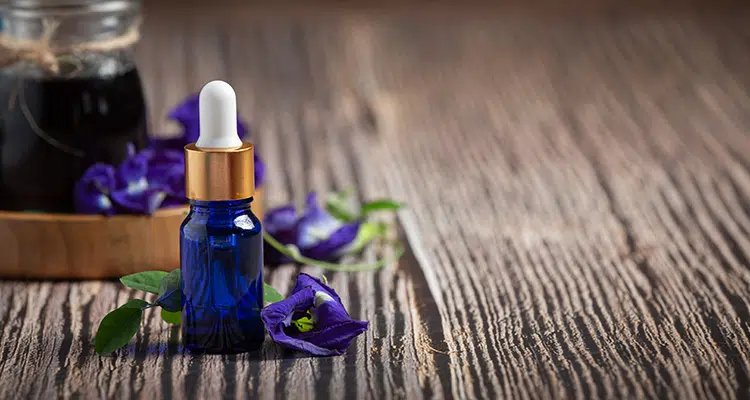Reflexology for Sleep: What It Is and How It Helps
Reflexology, also known as zone therapy, is an ancient form of alternative medicine that uses specific pressure points in the hands and feet to help alleviate stress and other ailments. Similar to massage (minus the use of oil or lotion), reflexology focuses on targeted pressure in the feet and hands to elicit a reaction within your body. From pain management to stress reduction, this form of alternative medicine is a low-risk option for easing a myriad of symptoms — including sleep troubles.
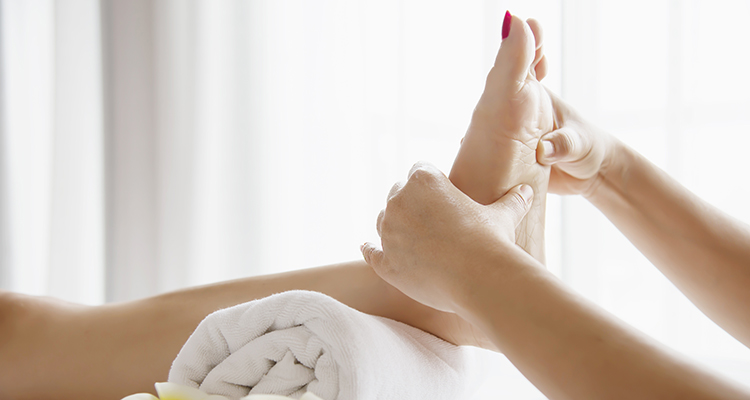
In this article, we’ll discuss exactly what reflexology is, the principles behind it, and how it works as an option for insomnia treatment.
Content
What is Reflexology?
Reflexology is an ancient holistic practice that dates back nearly 5,000 years. Reflexologists apply pressure to the feet, hands, ears, and sometimes head and neck to trigger a response in corresponding areas of the body, including your major organs. This form of touch therapy is designed to affect the function and health of different parts of your body. It’s believed that certain areas on the foot and hands are connected to specific organs, nerves, glands, tissues, bones, and ligaments. These pressure points not only control physical changes but psychological functions as well, including immunity and sleep. When pressure is applied, it can elicit relaxation and healing. Reflexologists create a map or chart of the feet and hands to guide them in their practice. Applying pressure helps improve circulation and restore your body’s natural balance.
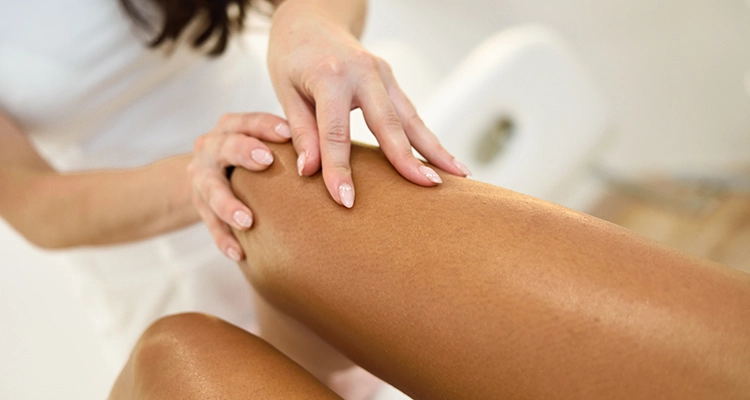
Reflexology services are often offered in combination with other hands-on forms of therapy including chiropractic care, massage, and certain forms of physical therapy. While there’s no scientific proof that reflexology has lasting effects or can cure certain medical conditions, it is used as a holistic form of therapy to ease the following symptoms:
- Stress and anxiety
- Chronic pain
- Psychological conditions (including depression)
- Sinus pressure and congestion
- Gastrointestinal issues
- Reproductive issues (including menstrual cramps and pelvic pain)
Used in combination with other forms of therapy and treatment, reflexology works to ease a variety of symptoms, both short and long-term. Reflexology is often done by a trained professional, but some people experiment with stimulating their own pressure points to achieve the same results.
The Science Behind Reflexology
You may be wondering why the art of reflexology is focused so heavily on certain areas of the body. For example, the feet, hands, and neck. These body parts are packed with nerve endings. In fact, the feet alone contain 15,000! There are several theories about how reflexology can offer therapeutic benefits including:
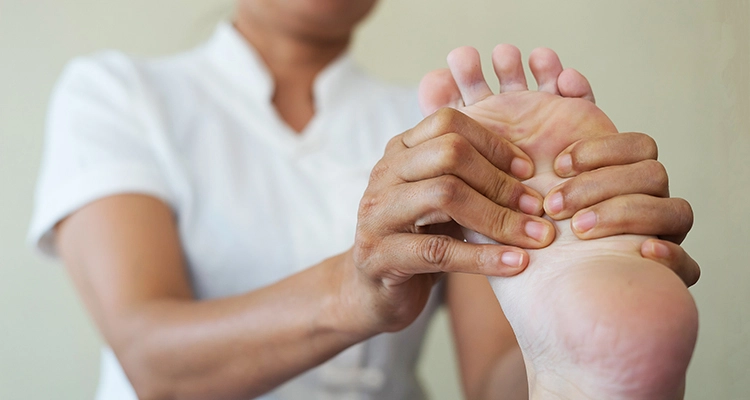
- The healing power of the human touch
- Realigning the bones and muscles in the foot
- Decongesting nerve endings
- Restoring the flow of energy within the body known as Qi (more on this in a minute)
- Activating the parasympathetic nervous system while inhibiting the sympathetic nervous system
- The placebo effect
By capitalizing on these benefits, reflexology practices may alter your sleep patterns, induce sleep, and help alleviate underlying issues that are triggering your insomnia. For example, deep pressure like that used in reflexology is said to activate positive changes in brain wave activity. These changes mimic the light sleep you experience during stages 1 and 2 of REM sleep. Reflexology not only reduces any stress or anxiety that’s keeping you up at night but can have positive physical side effects including lower blood pressure, heart rate, and respiratory rate.
To fully understand how reflexology and certain pressure points can help alleviate insomnia symptoms, you need to understand the inner workings of your body. For example, the tops of your toes are actually connected to your brain. Stimulating this area can promote positive thinking and relaxation. One point on the outer edge of your big toe (referred to here later as LV3) connects to your brain’s pineal gland which produces the sleep-inducing hormone melatonin. By applying pressure to the LV3, reflexologists can trigger melatonin production.
Other pressure points in your toes are connected to the shoulders and neck. When pressure is applied, you may find relief from debilitating headaches as well as muscle tension caused by stress. The ball of your foot connects to your lungs and chest. Stimulating it may help slow down and stabilize your breathing. The center of the ball of your foot is directly connected to your diaphragm and solar plexus, two more areas that promote relaxation.
More on Reflexology and Sleep
By promoting relaxation, reducing pain, and calming the nervous system, reflexology is growing in popularity as a low-risk way to treat insomnia and promote sleep. Millions of people suffer from some form of insomnia or sleep disturbances. Acute insomnia is short-term, whereas chronic insomnia persists for three months or longer. Left untreated, sleep deprivation and lack of restorative sleep can cause a long list of physical and psychological issues including memory impairment, confusion, depression, heart disease, and weight gain, just to name a few.
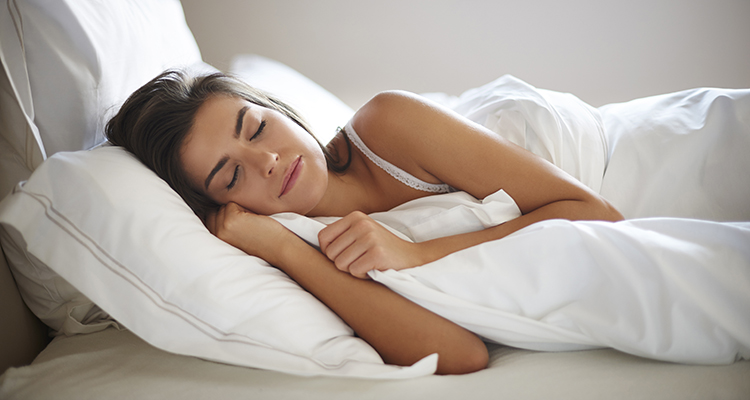
Most forms of insomnia are secondary, which means they’re triggered or caused by another underlying issue. By addressing these factors, many people find insomnia relief as well. Reflexology for sleep follows this same principle. Stimulating pressure points associated with things like stress, anxiety, and pain can help reduce or even eliminate the cause of your sleep troubles.
Stress and anxiety are two of the leading causes of insomnia. Racing thoughts, increased heart rate, and irritability can make it impossible to fall and stay asleep. The inability to relax your mind and body creates a constant state of hyperarousal, especially at night. In addition, chronic pain and discomfort make it difficult to find a comfortable sleeping position and may wake you several times throughout the night. By easing both your mental and physical ailments, reflexology works to eliminate distractions and help you achieve deep, restorative sleep.
The Best Pressure Points for Sleep
When looking at a reflexology map of your feet and hands, you’ll see that certain pressure points are associated with specific areas of the body. By stimulating these points, professionals work to relieve certain symptoms and ailments. Therapists use different names and labels to identify these pressure points. You may notice a combination of letters, numbers, and ancient Chinese names, but they all target the same general areas.
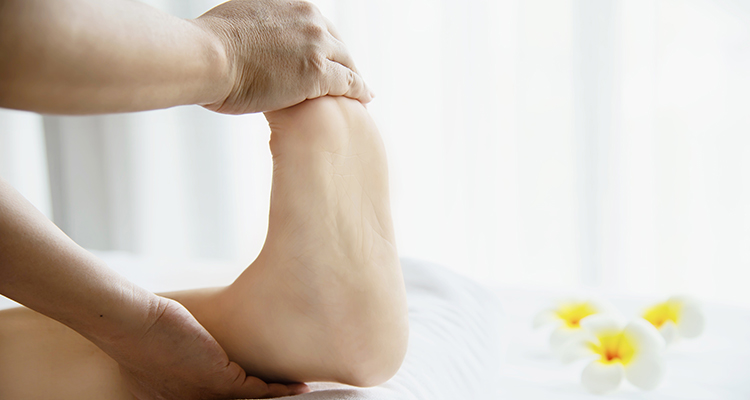
When it comes to inducing sleep and easing insomnia symptoms, here are some of the most common and effective pressure points reflexologists use.
HT7/Shen Men/Spirit Gate
Located at the crease of your outer wrist below your pinkie finger, this pressure point goes by many names. Applying pressure to this area is believed to quiet the mind, creating feelings of relaxation and calm. This can work to ease stress and anxious thoughts and help you fall asleep faster. Some patients report an improved quality of sleep and longer duration of sleep.
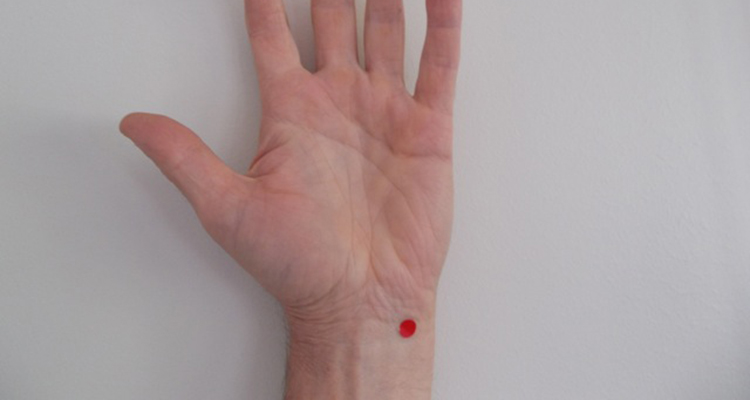
To locate this pressure point, bend your hand forward and look for the crease on the underside of your wrist just under the bottom of your hand. Reflexologists will feel for the small, hollow space and apply pressure using an up-and-down or circular motion. The therapist will perform this acupressure technique for approximately three minutes, alternating from the left side of your wrist to the right before moving on to your other hand.
Inner Frontier Gate
Another pressure point near your hands that may help ease insomnia symptoms is called the inner frontier gate. Located on the inner forearm, you can find this pressure point between the two most prominent tendons. If you suffer from headaches, including migraines, stomach upset, nausea, or other gastrointestinal issues, this pressure point may bring much-needed relief.
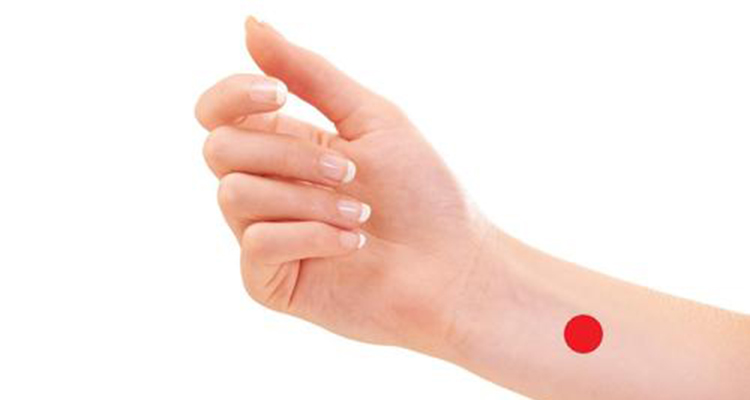
A therapist will have you turn your hands over, palms up. Starting at the crease of your wrist, count three finger widths down your forearm. The reflexologist will apply downward pressure between these two tendons using an up-and-down motion or small circles. This massage technique lasts approximately 5 seconds and should be repeated on both arms.
SP6/San Yin Jiao/Three Yin Intersection
This pressure point is located on the inner side of your leg near the highest point of your ankle. Try counting four finger-widths above your ankle. Reflexologists use this pressure point to treat pelvic problems, urinary issues, and menstrual pain and discomfort. Don’t use this pressure point if you’re pregnant, as some studies suggest it may induce labor. A reflexologist will apply steady, deep pressure behind the tibia (your lower leg bone) using circular motions for 5 to 10 seconds. After stimulating this pressure point consistently for several days to weeks, patients reported less frequent insomnia symptoms and overall improved quality of life.
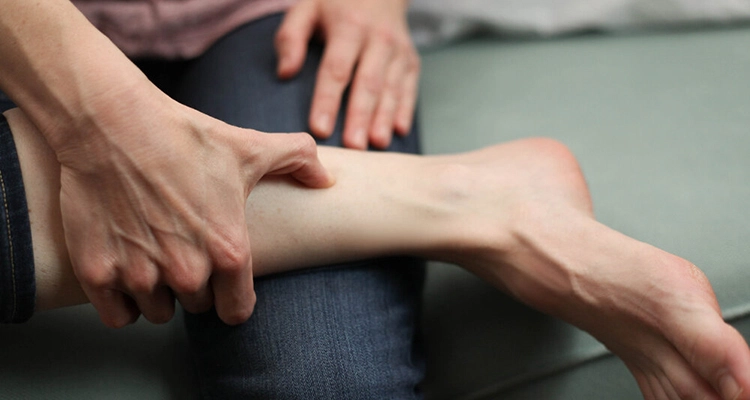
KD3/Taixi
Another popular pressure point for improving sleep is the KD3 point, also called Taixi which is located just above the heel on the inside of your foot. A common pressure point for treating hypertension, anxiety, and stress, applying pressure to the KD3 point may also lower your blood pressure, reducing the risk of heart disease and other health issues. Similar to stimulating the SP6 pressure point, a therapist will use deep, steady pressure for approximately 5 seconds before releasing.
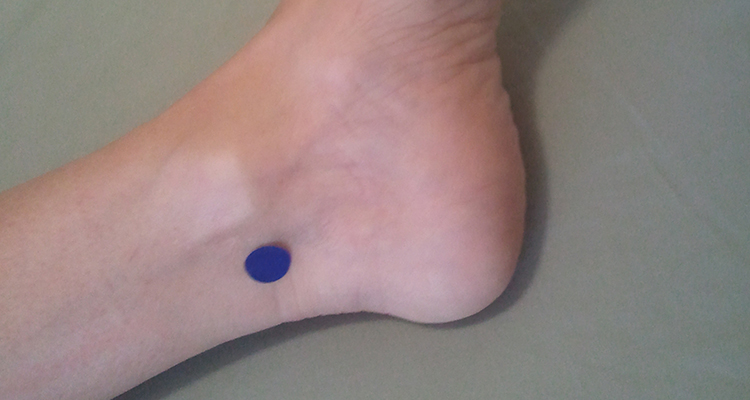
Bubbling Spring
In reflexology, the name bubbling spring is given to the pressure point located on the sole of your foot. When you curl your toes inward, you may notice a slight depression above the middle of your foot. This indent is the pressure point you’re looking for. Press here firmly, massaging in circular motions for a few minutes to induce sleep, settle your mind, and ground your energy.
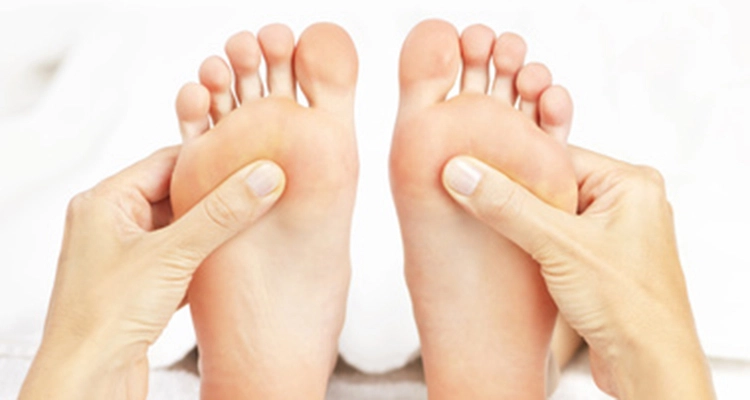
This reflexology technique is done lying down on your back. If you’re performing it yourself, you’ll need to bend your knees enough so you can reach your feet. Grab your foot while curling your toes and feel around with your fingers until you find the indent on the sole, near the middle. Repeat this process with the other foot. It may be more comfortable and effective to let a professional stimulate the bubbling spring pressure point so you can fully relax and experience all its benefits.
LV3/Tai Chong
In addition to the sole of your foot and ankle, the top of the foot is a popular place for locating and stimulating certain pressure points. The LV3 also referred to as Tai Chong, is another pressure point used to relieve stress and treat insomnia triggered by anxiety or anxious thoughts. Tai Chong is located on the top of your foot where the skin of your big toe touches the next toe. Stimulating the LV3 takes deep, firm pressure for 5 to 10 seconds for improved sleep.
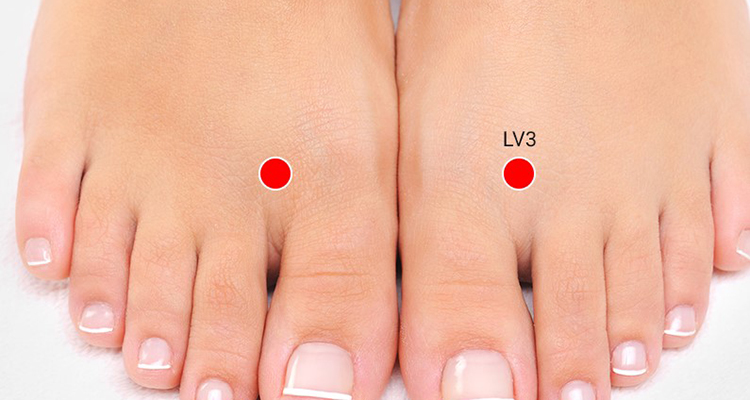
Yin Tang
Moving to a different part of the body, there are also pressure points in your head and neck that may offer insomnia relief. This pressure point is located in the center of your forehead, just above your nose and between your eyebrows. Some yogis refer to this as their “third eye”. Another pressure point associated with stress relief, pressing on the yin tang can help alleviate stress, restlessness, fear, and agitation. Easy to find, you can press on this pressure point using two fingers. Your thumbs are often the most effective and allow you to apply the deepest form of pressure. While research is still being done on its effectiveness, the yin tang may also offer relief from sinus pressure and headaches.
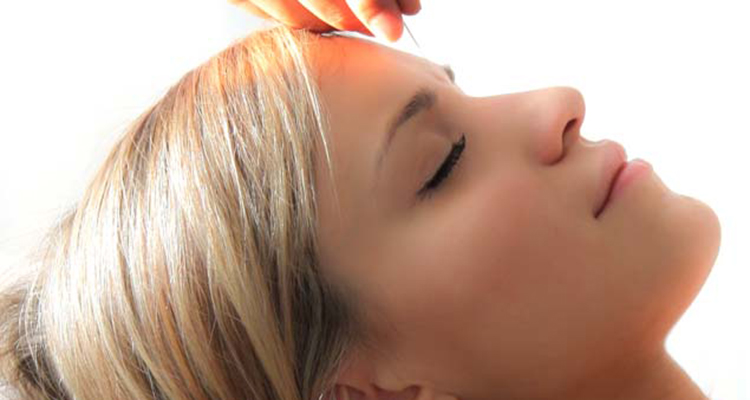
Wind Pool
From the front of your head to the back of your neck, this pressure point is located at the base of your neck in the back above your shoulders. You’ve probably reached back and grabbed or rubbed this same area in hopes of relieving stress and tension. This reflexology technique aims to do the same by reducing stress and calming the mind.
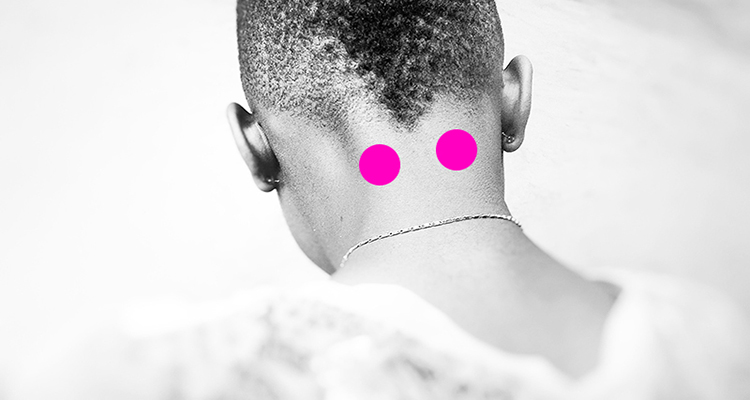
Feel behind your neck for the mastoid bone located behind your ears. Now, follow this groove until you find the area where your neck muscles attach to the base of your skull. An experienced reflexologist will have no problem easily finding this pressure point. If you’re performing this technique on yourself, clasp your hands together, gently interlocking your fingers and opening your palms to create a cup-like shape. Now, using your thumbs, apply firm pressure inward toward your skull. Use up-and-down movements alternated with circular motions for approximately five seconds.
Taking deep breaths while performing this technique will help release tight muscles and calm your nerves. In addition to stress relief, the yin tang may ease respiratory symptoms like coughing. Some research suggests it may even reduce the risk of developing obstructive sleep apnea.
Acupressure vs. Reflexology
Reflexology and acupressure are related practices with some differences.
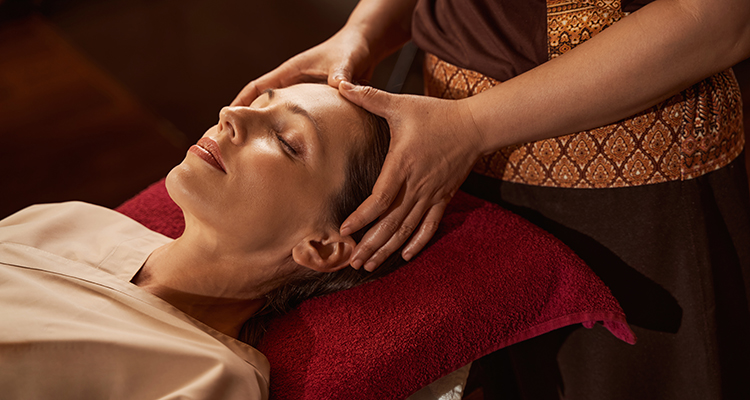
For starters, acupressure points are referred to as meridians and run along 14 different energy lines within the entire body, whereas reflexology focuses on the ears, hands, and feet. Acupressure is based on a concept known as Qi (chi). Qi is the energy source that circulates throughout your body via pathways. It’s believed that blockages along these meridians may create an imbalance or obstruction in the flow of Qi. These interruptions in circulation can cause illness, chronic pain, sleep troubles, and other unpleasant symptoms. Therapists believe that applying pressure or massaging these meridian points can restore your Qi balance, improving your overall health and wellbeing.
While reflexology and acupressure have both been around for thousands of years, they’ve only recently gained traction in the medical field. As of now, there is no scientific evidence that these techniques actually work to cure illnesses or offer long-term relief. With that being said, countless studies show promising results when evaluating the effectiveness of acupressure and reflexology on sleep quality.
Additional Tips for Easing Insomnia Symptoms
While reflexology can offer countless benefits, improving your overall sleep quality will take more than a few acupressure appointments. Here are some additional tips for promoting healthy sleep patterns and supporting your reflexology efforts.
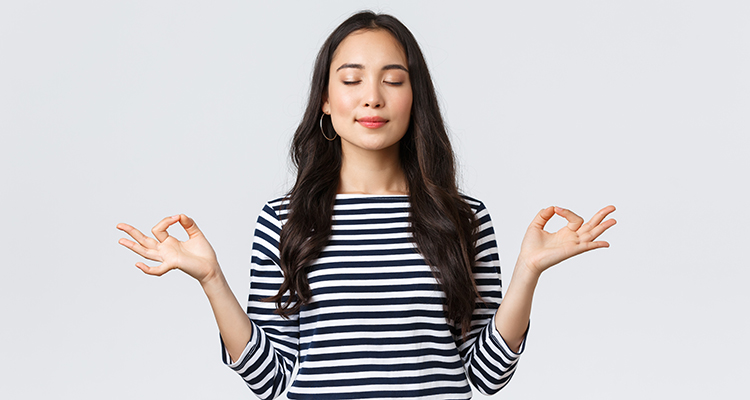
Reduce Stress and Anxiety
Considering stress is a leading cause of insomnia and stress reduction is one of the main benefits of reflexology, why not adopt stress reducing activities in other aspects of your life as well? Things like meditation, yoga, and mindfulness are all proven to ease anxiety symptoms, calm your mind, and promote relaxation. Taking up a hobby, getting plenty of vitamin D and sunshine, and practicing self-care can all help eliminate stress from your life and help you get the most out of acupressure.
Get Plenty of Physical Activity
One of the best ways to combat and prevent chronic pain is to get moving! Daily exercise and physical activity are crucial for maintaining a healthy weight, preventing illnesses, and reducing pain. Several reflexology techniques are designed to help alleviate pain, reduce inflammation, and improve circulation. Walking, pilates, and yoga are especially helpful for flexibility and heart health.
Not only will regular exercise reduce your pain symptoms, but it can improve your overall mood. When you exercise, your brain releases feel-good chemicals known as endorphins. These endorphins can help trigger feelings of happiness and relaxation. Exercising during the morning is also proven to make you more tired at night so you can fall asleep faster and sleep more deeply.
Practice Healthy Sleep Hygiene
Hygiene isn’t just related to your physical cleanliness and health. Healthy sleep hygiene refers to the behaviors and environment you create and how that promotes consistent, uninterrupted sleep. For example, watching television or scrolling through your phone before bed can sabotage your sleep. The blue lights from these devices stops your brain from producing and releasing the sleep hormone melatonin. Instead of using electronics before bed, try reading a book or writing in a journal. This last activity can also help quiet your mind and purge negative or anxious thoughts.
Your bedroom environment should also be conducive for sleep. Eliminate distractions by investing in room darkening shades or a sleep mask. A sound machine can act like white noise, preventing other outside noises from waking you during the night. Reserve your bed for sleep and sex only so that your body and brain know that climbing into bed means it’s time for sleep. If you can’t fall asleep within the first 15 to 20 minutes, get up and perform a relaxing activity before returning to bed.
Reduce the risk of pain or discomfort by purchasing a comfortable mattress, pillows, and bedding. Avoid gastrointestinal issues or discomfort at night including acid reflux and nausea by avoiding large meals high in fat and sugar right before bed. Instead, opt for a small, light snack at least 60 minutes before you lay down. While staying hydrated is important, avoid drinking too much water before bed to prevent frequent bathroom trips that disrupt your sleep.
These small changes in your sleep environment and routines can make a major impact on your sleep quality and duration.
Find Insomnia Relief Today
Millions of people experience insomnia every day (or should we say night?). Trouble falling and staying asleep is triggered by countless factors from stress and anxiety to pain, lifestyle choices, and certain medications. While sleep aids and medication are an option for some people, others prefer more natural or holistic ways to ease insomnia symptoms. Reflexology is one such technique. This ancient form of Chinese medicine helps some people achieve better sleep and find relief from their insomnia triggers.
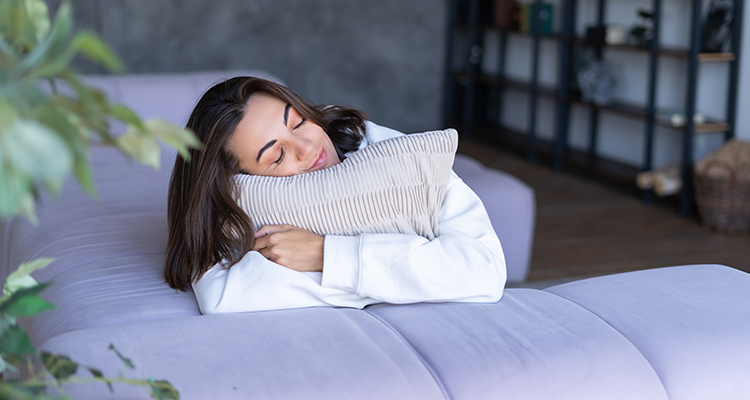
At Somnus Therapy, we help people not only identify and understand their sleep issues but also accept them. Through a variety of therapy techniques and approaches, you can find the perfect treatment plan to fit your needs and lifestyle.
Click here to learn more about our team and methods.

